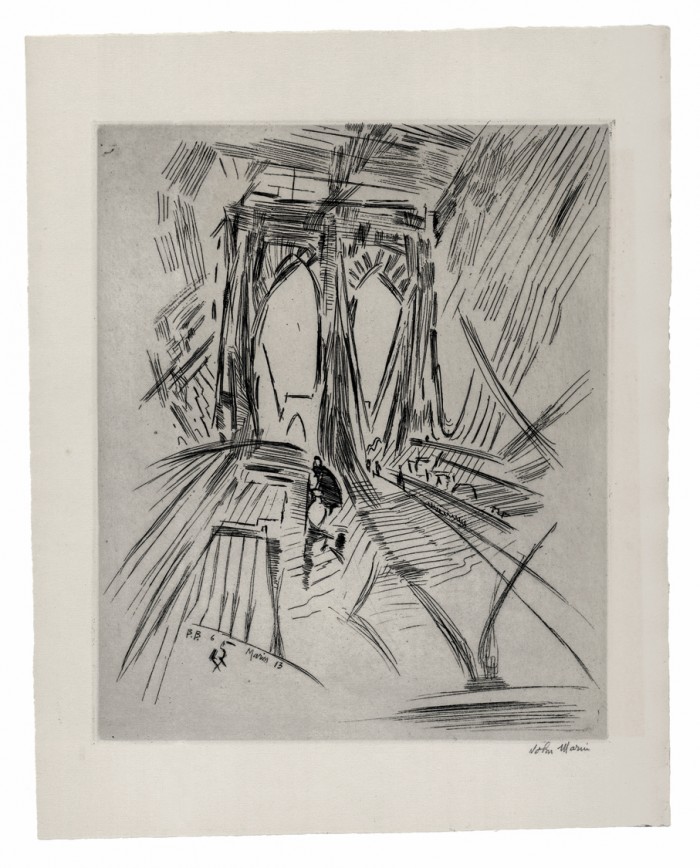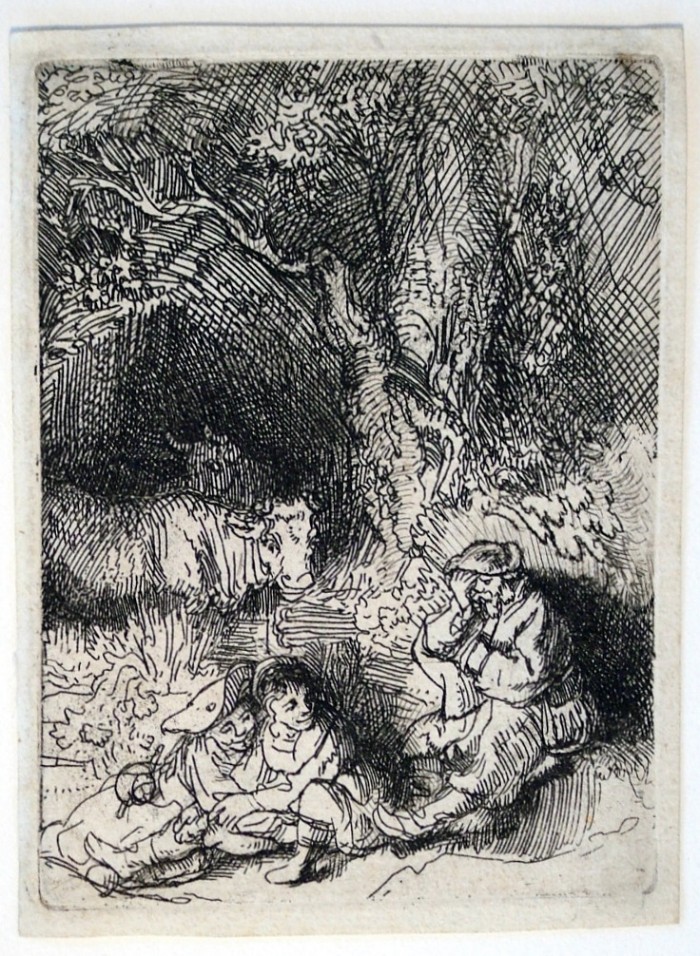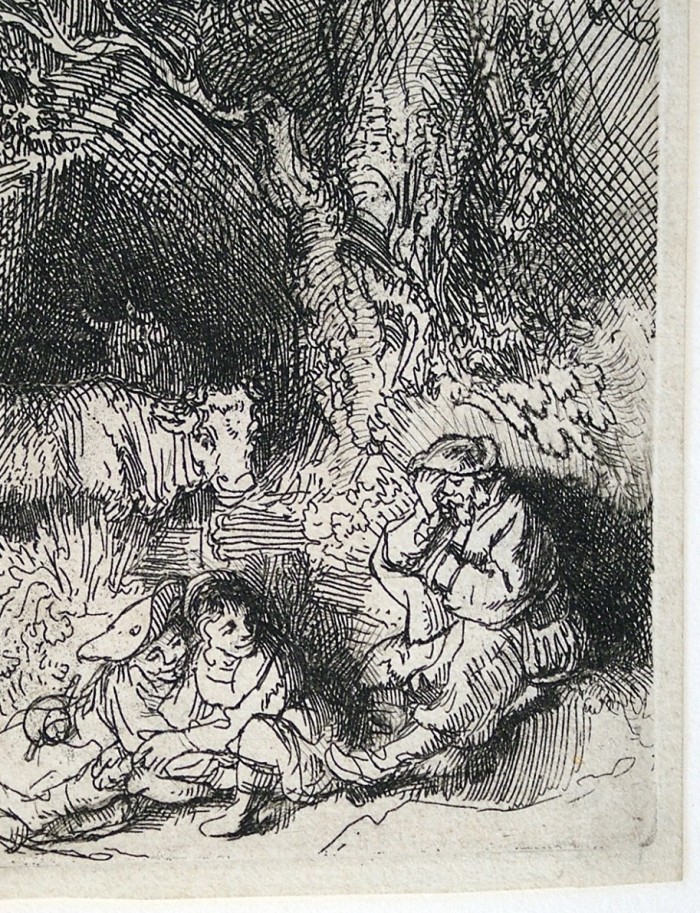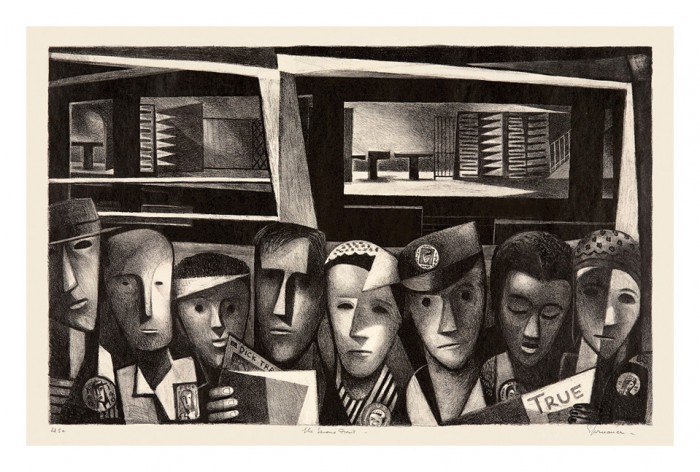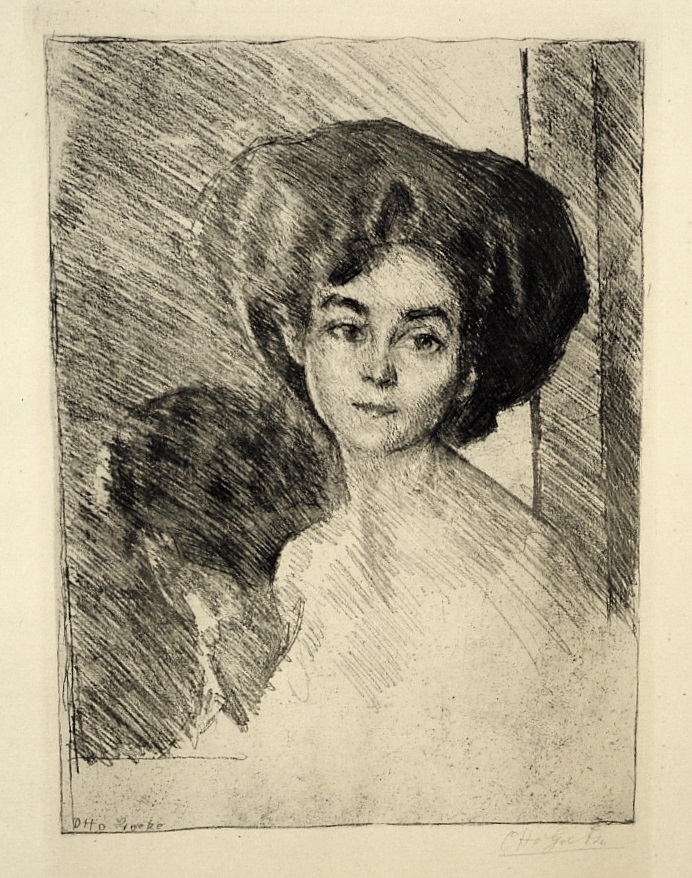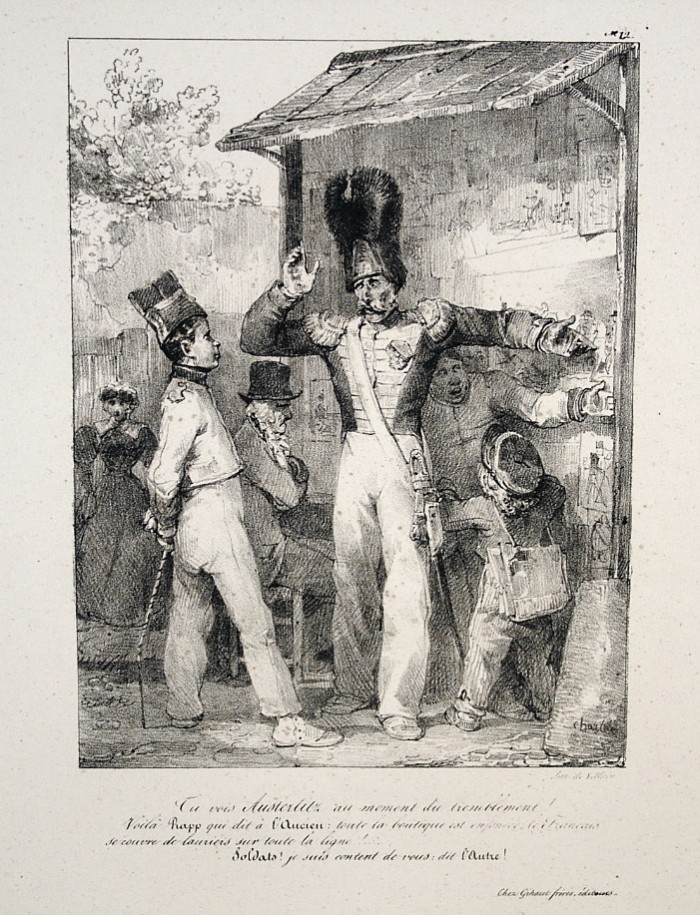Six American Etchings: The New Republic Portfolio 1924
Tuesday, July 26th, 2011Six American Etchings: The New Republic Portfolio 1924
The complete set of six etchings, as issued in 1924, containing Marin’s rare Brooklyn Bridge No. 6 (Swaying), which appeared in only a few sets before being substituted by Marin’s Downtown the El (Zigrosser 134).
The set includes:
Peggy Bacon (1895–1987), The Promenade Deck, 1920 (Flint 47), 6 x 8 3/8 inches
Ernest Haskell (1876–1925), The Sentinels of North Creek, ca. 1923, 5 x 7 7/8 inches
Edward Hopper (1882–1967), Night Shadows, 1921 (Levin 82) 7 x 8 3/8 inches
John Marin (1870–1953), Brooklyn Bridge No. 6 (Swaying), 1913 (Zigrosser 112) 10 ¾ x 8 ¾ inches
Hayes Miller (1876–1952), Play, 1919, 4 7/8 x 5 7/8 inches
John Sloan (1871–1951), Bandit’s Cave, 1920 (Morse 195), 7 x 5 inches
An exceeding rare and fine set, surely one of the earliest issued (since it contains the rare Marin print). Hopper’s Night Shadows is extraordinarily black and rich; each of the other impressions including Marin’s Brooklyn Bridge No. 6 (Swaying) is unusually fine.
This set has unusual historical importance: it includes prints exemplifying both traditional approaches to American printmaking, including those by Haskell, Miller, Bacon, and Sloan, as well as examples of important early American Modernist printmaking: Hopper’s Night Shadows and Marin’s Brooklyn Bridge No. 6 (Swaying).
In 1924 The New Republic offered readers a set of six original signed etchings along with the purchase of a subscription to the magazine. The original offering, in an advertisement in the Saturday Review of Literature (December 6, 1924, p. 350), reads in part:
SIX ETCHINGS
Incomparable as Christmas Gifts
Originals – Not Reproductions: Each Proof Printed by Peter J. Platt, on Handmade Van Gelder Paper – Signed by the Artist, and Offered At Incredibly Small Cost with a Subscription to The New Republic ‘The Ablest of America’s Weeklies’ …“The difficulty with this offer is not to explain, but to refrain…Yet overstatement is almost difficult in face of the facts—the foremost of which (alone simply sufficient to testify to the quality of these etchings) is the names of the six artists themselves.” A subscription form was then appended, offering readers a year’s subscription to the New Republic, with the set, for $8 (or two years for $12; the New Republic alone was $5 a year).
The edition size is not known. In a letter to John Sloan dated January 14, 1925, Robert Hallowell, secretary of the New Republic, writes, referring to set,“These went very well up until the end of last year. Since then, however, the orders have dropped off so considerably that I think there is considerable doubt that we will ever dispose of as many as a thousand sets. Up to date the total is between five and six hundred.” (Morse, 1969, p. 221).
Marin’s Brooklyn Bridge print was planned for inclusion in the set, but after a few were printed, it was replaced by Marin’s Downtown the El. (The original cover specified the Brooklyn Bridge, but in subsequent covers this was crossed out in ink and replaced by the words “Downtown Manhattan.”) Zigrosser, Marin’s cataloguer, suggested that perhaps the plate had broken. This is unlikely since the printer, Peter Platt (1859–1934), was America’s most distinguished artists’ printer of the period, worked alone, and it was unlikely that he would have broken a copperplate. A more likely explanation is that Downtown the El is about the same size as the other prints in the set, whereas the Brooklyn Bridge print is much larger; a plate of the same size would facilitate the printing of a large issue. Each of the plates was purchased by the New Republic, and the paper’s records for 1924–5, and probably also the plates, have been lost or destroyed.
Today, complete sets of the New Republic are rare, and those containing Marin’s Brooklyn Bridge are rarer still – indeed, they are virtually unknown to the market. Zigrosser had not encountered a set, and in his catalogue raisonne of Marin prints he guessed – incorrectly – which Marin print was initially included in it. Years later, in a correction (published in The Print Collector’s Newsletter, 1970, Vol. 1, No. 4), he noted that he had located only one institution which owned a complete set New Republic set (The New York Public Library; today the impression cannot be located), and that set included Downtown the El, not the Brooklyn Bridge. We have been unable to locate any museum or institution with a complete set (with either Marin!).
Each of the artists represented in the portfolio was important. At the time of the publication of the set, John Sloan was one of the best-known artists in America, a member of the Ashcan School, a painter represented in great museums throughout the country, and a major printmaker as well. Hayes Miller was known not only as an artist but also as a teacher whose students included the artists of New York’s Fourteenth Street School, including Peggy Bacon, an early Modernist who became a leading book illustrator (and was the youngest artist to produce a piece for this set). Ernest Haskell was already prominent in the United States and in Paris, noted as an etcher and student of Whistler. By 1924 Edward Hopper was beginning to earn recognition as one of America’s great young artistic talents; and John Marin had already been widely recognized for his role in creating some of the first American Modernist paintings and prints after the Armory Show in 1913.
This set, a great rarity in near-pristine condition and containing the original group of etchings, represents an important landmark in American printmaking.
